Exposure to hydraulic fracturing fluid in drinking water has been shown to increase the risk of respiratory problems, premature births, congenital heart defects, and other medical problems. But not all wells are created the same. Since different hydraulic fracturing (fracking) sites use a diverse mix of chemical ingredients, often individuals, doctors and researchers are in the dark about the health consequences of living near a particular well.
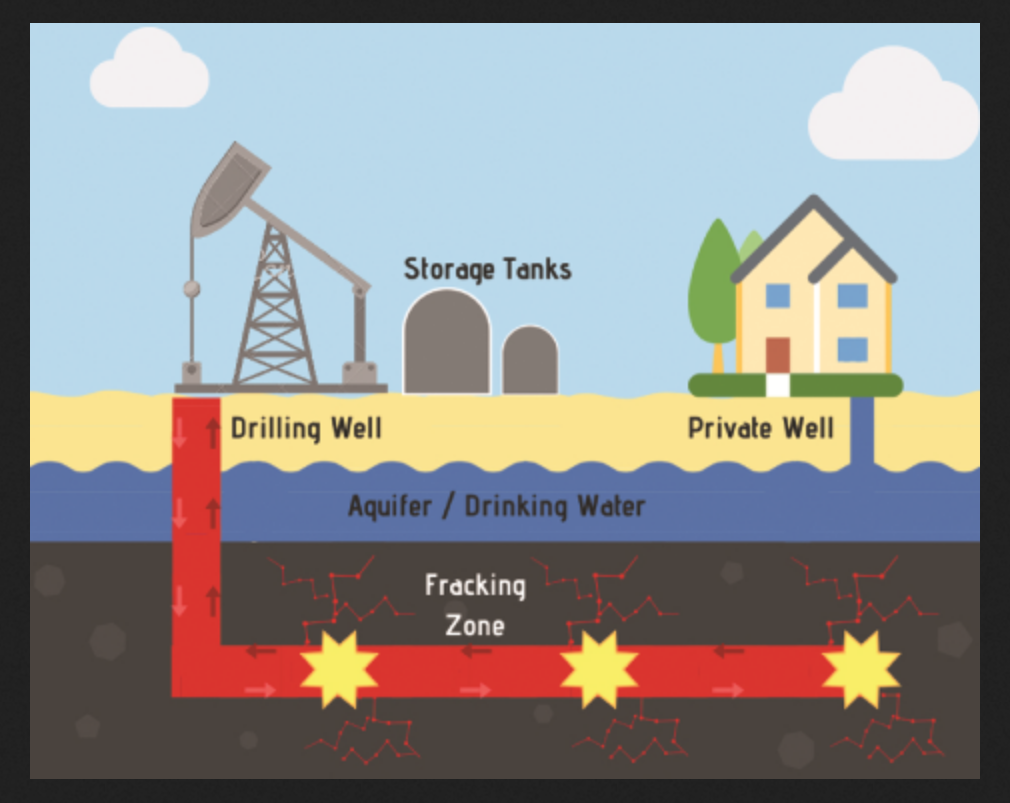
Now, a new, interactive tool created by Penn Medicine researchers allows community members and scientists to find out which toxins may be lurking in their drinking water as a result of fracking. By typing your ZIP code into the website or accompanying app called WellExplorer one can view the closest fracking sites in your state, learn which chemicals are used at those sites, and view their levels of toxicity.
In a recent study, published in Database: The Journal of Biological Databases and Curation, the WellExplorer app’s creators found, for example, that wells in Alabama use a disproportionately high number of ingredients targeting estrogen pathways, while Illinois, Ohio, and Pennsylvania use a high number of ingredients targeting testosterone pathways.
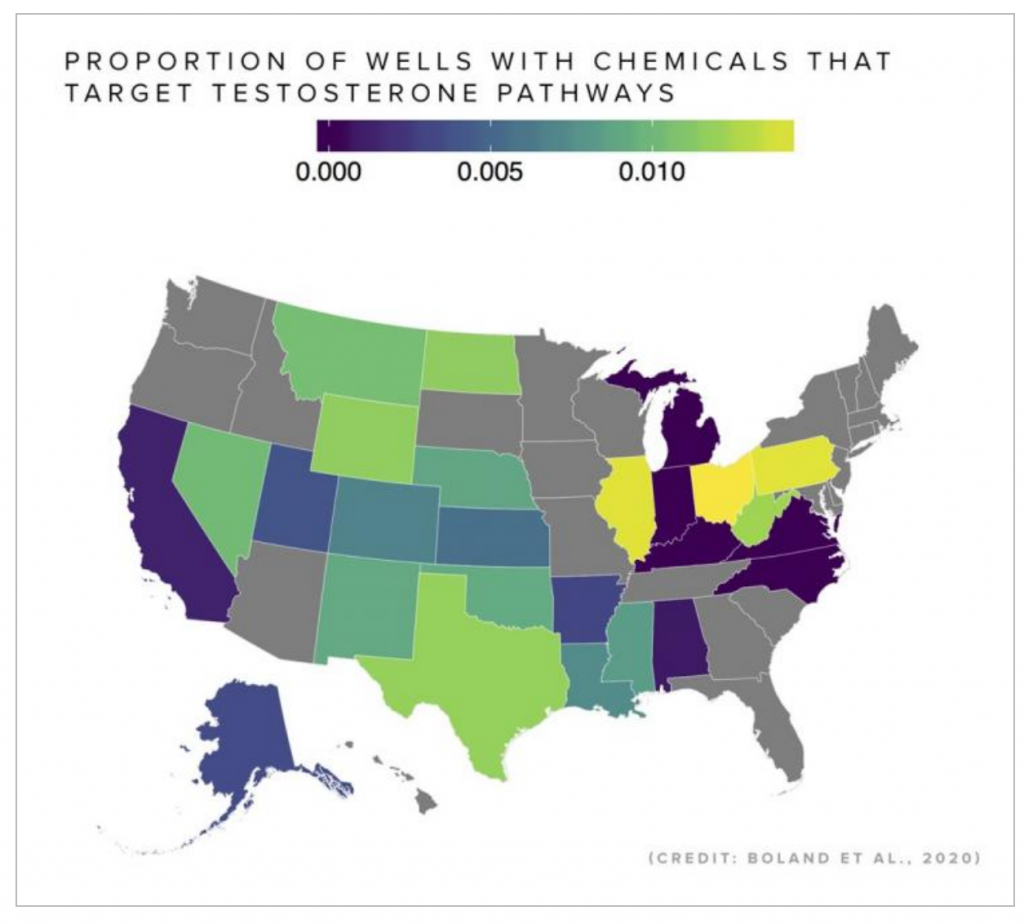
The information found through WellExplorer might be particularly relevant for individuals who use private water wells, which are common in rural Pennsylvania, since homeowners may not be performing rigorous testing for these fracking chemicals, according to the study’s principal investigator Mary Regina Boland, PhD, an assistant professor of Informatics in the Perelman School of Medicine at the University of Pennsylvania.
“The chemical mixtures used in fracking are known to regulate hormonal pathways, including testosterone and estrogen, and can therefore affect human development and reproduction,” Boland said. “Knowing about these chemicals is important, not only for researchers who may be studying health outcomes in a community, but also for individuals who may want to learn more about possible health implications based on their proximity to a well. They can then potentially have their water tested.”
While FracFocus.org serves as a central registry for fracking chemical disclosures in the United States, the database is not user-friendly for the general public, and it does not contain information about the biological action of the fracking chemicals that it lists. In order to create a tool that could provide more in-depth, functional information for researchers and individuals alike, the Penn researchers first cleaned, shortened, and subsetted the data from FracFocus.org to create two newly usable files that could be in used in WellExplorer website and app.
Because the research team also wanted to provide toxic and biological properties of the ingredients found at these well sites, they integrated data from the Toxin and Toxin Target Database (T3DB). From that database, they compiled information on fracking chemicals’ protein targets (and the genes that encode those proteins), toxin mechanisms of actions, and specific protein functions. Moreover, they extracted the toxicity rankings of the top 275 most toxic ingredients from the Agency for Toxic Substances and Disease Registry, as well as a list of ingredients that were food additives as described by Substances Added to Food Inventory. The team then linked all of that information together and created a ZIP Searcher function into their web tool, so that people could easily find their exposure risks to specific chemicals.
“The information had been out there, but it was not all linked together in a way that’s easy for regular people to use,” Boland said.
However, Boland added that the use of chemicals at a fracking site may not necessarily mean that those chemicals would be present in the water supply, which would be dependent on other factors, such as what type of soil or bedrock is being drilled into, and the depth of both the hydraulic fracturing well and an individual’s private well depth. Nonetheless, WellExplorer provides a starting point for residents who may be experiencing symptoms and want to have their water tested.
What You Can Learn From WellExplorer
Beyond information-gathering for individuals, WellExplorer can also be used as an important tool for physicians, environmental scientists, epidemiologists, and other researchers to make connections between specific health outcomes and proximity to a specific fracturing well.
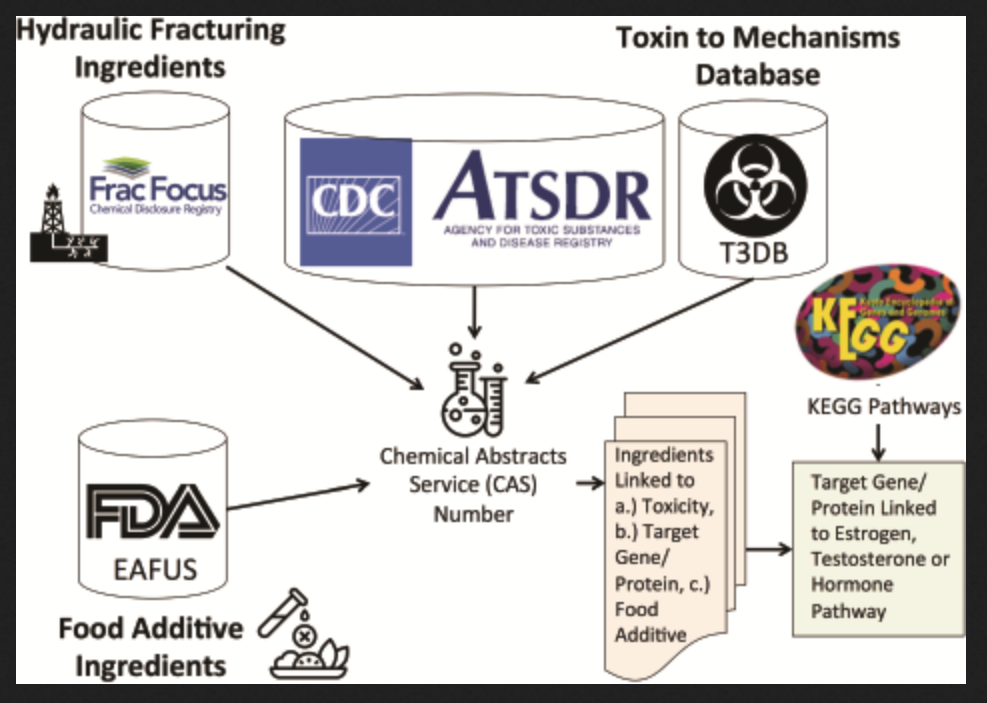
The researchers linked the hydraulic fracturing ingredients to information on toxicity, gene and protein targets for each chemical and whether or not the chemical was a food additive using their Chemical Abstracts Service (CAS) numbers. They further linked gene/proteins to estrogen, testosterone or hormone pathways using KEGG pathways.
“Nationally, researchers are trying to link fracking to health outcomes, and I believe that a large reason why answering that question is challenging, is because different wells are using different ingredients, and so, the side effects of exposure would be different from place to place,” Boland added. “What this app gives you is some information about where to start looking for these answers.”
Linking Fracking to Hormonal Modulators
The researchers linked the hydraulic fracturing wells to their hormonal modulators using the method outlined in the figure above. This enabled them to visualize areas in the country with relatively high proportions of hydraulic fracturing wells that were utilizing ingredients affecting various hormones. For instance, as meantioned they found that Alabama has a high proportion of wells using ingredients that target estrogen pathways. Whereas, Illinois, Ohio and Pennsylvania have a high proportion of hydraulic fracturing wells that were utilizing ingredients that target testosterone pathways. Nevada had a high proportion of wells that were targeting hormonal pathways in general (e.g. thyroid hormone pathways). See figure below.
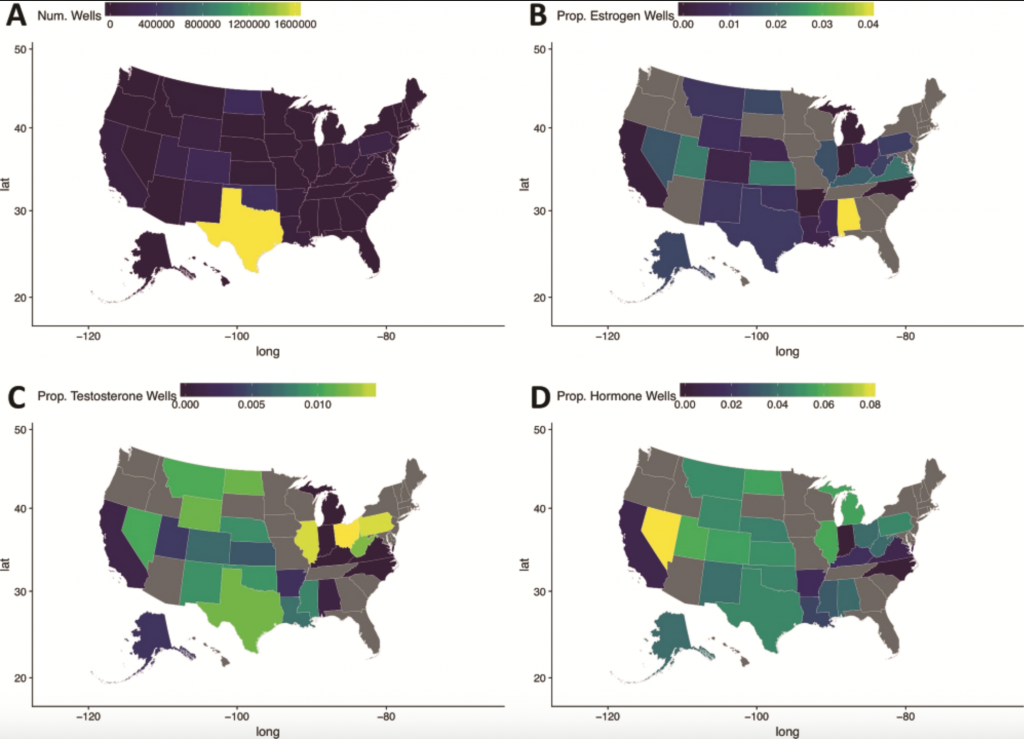
How to Use WellExplorer
Because WellExplorer has two purposes: one for researchers and the second for interested community members, we constructed the interface to have several features that are specifically designed to be used and interpreted by community members.
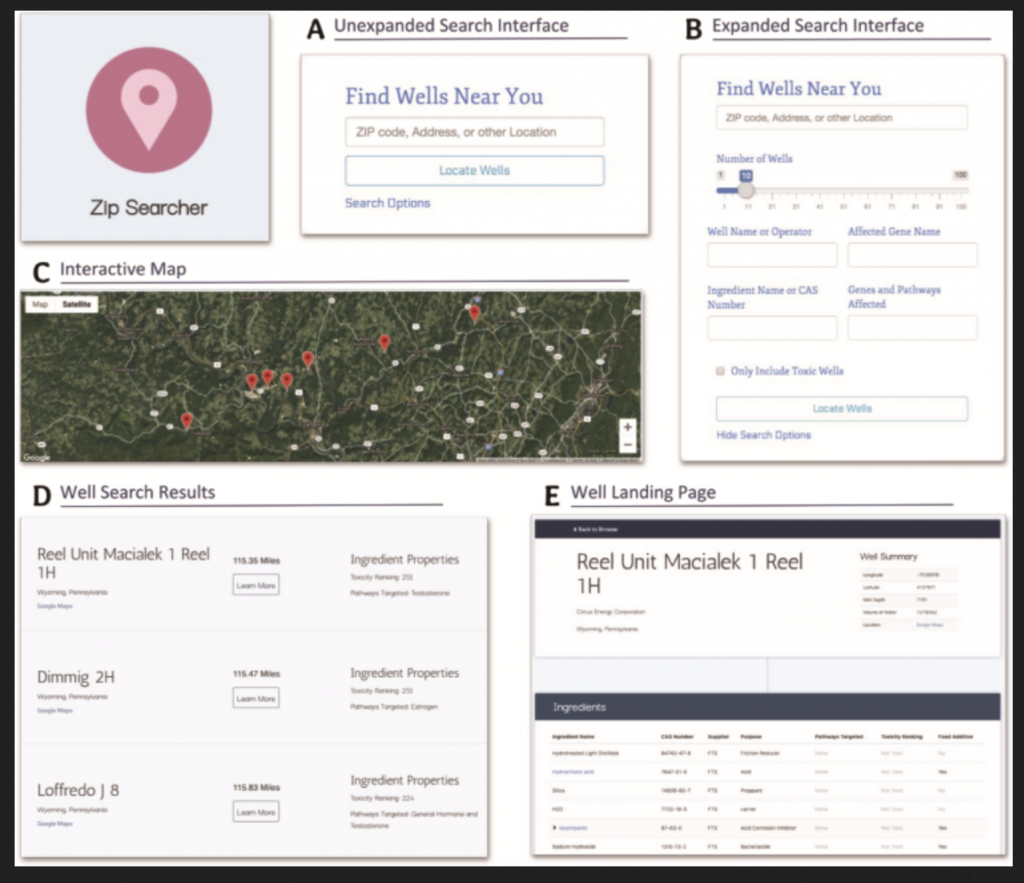
Conclusion/ “WellExplorer is useful for studying health outcomes related to proximity to hydraulic fracturing wells and also to community members deciding what chemicals they should test for in their private water wells. Researchers using WellExplorer can also search for specific gene names that they may be interested in to locate wells that are using ingredients targeting those genes. This could be very important for future research questions investigating health outcomes following exposure to hydraulic fracturing fluids.”
WellExplorer can be accessed for free at wellexplorer.org or downloaded through the Apple App Store.
Click Here for Full Text Study




